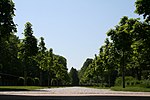Rygaards International School
Rygaards International School is a private Catholic international school in Copenhagen, Denmark. It was founded in 1909 by the Sisters of the Assumption, Rygaards is a co-educational day school amalgamated within the Danish School System. It is a private, state-subsidized school directed by a school board. The school is made up of two schools. One is a Danish Private School serving a community permanently resident in Denmark. The other is an International School, whose curriculum is based on the British system/National Curriculum adapted to international needs, and serves those who are in Denmark on a temporary basis. The school is a member of The Council of British International Schools (COBIS), the European Council of International Schools(ECIS), the Association of Catholic Schools in Denmark (FAKS) and the Danish International Schools Network (DISN).
Excerpt from the Wikipedia article Rygaards International School (License: CC BY-SA 3.0, Authors).Rygaards International School
Torkel Badens Vej, Gentofte Municipality
Geographical coordinates (GPS) Address External links Nearby Places Show on map
Geographical coordinates (GPS)
| Latitude | Longitude |
|---|---|
| N 55.7306 ° | E 12.5562 ° |
Address
Rygaards Skole
Torkel Badens Vej
2900 Gentofte Municipality, Hellerup
Capital Region of Denmark, Denmark
Open on Google Maps








